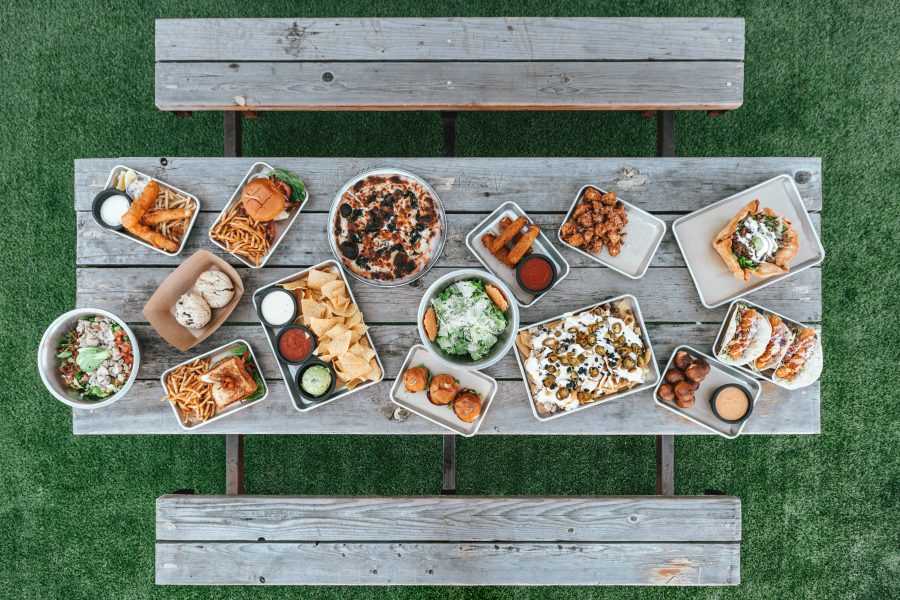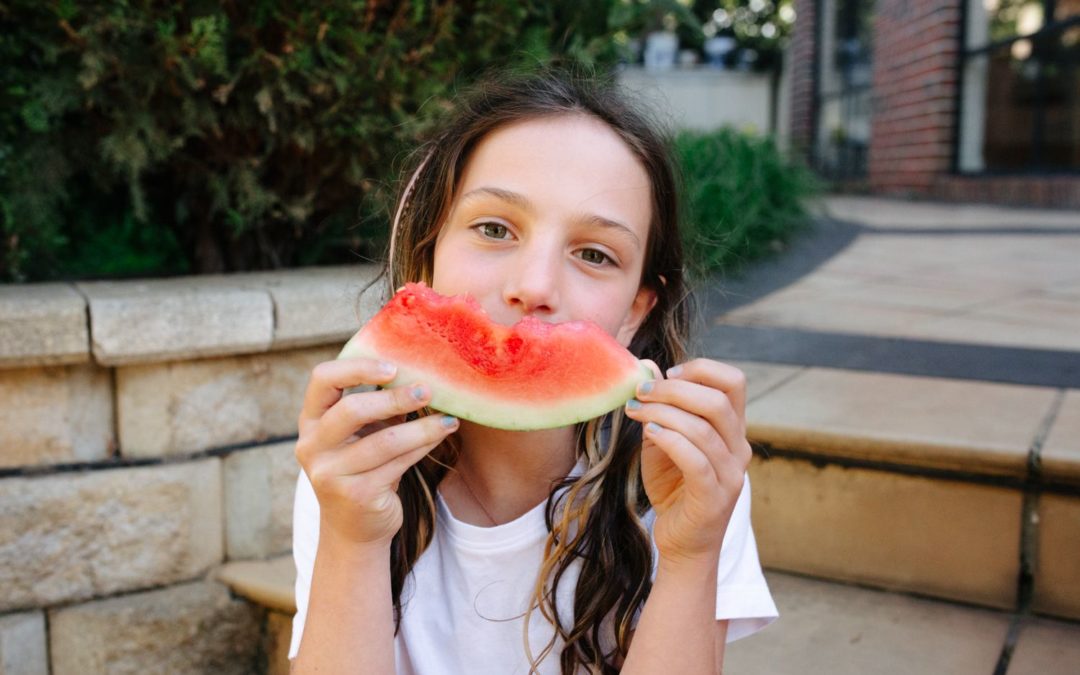Healthy eating on a budget is tricky. Food is complicated. When choosing foods, we are navigating many factors including cost, taste, nutrition, others’ preferences and your own foods beliefs and values. But with some knowledge and planning it is certainly possible to eat nutritious foods and not hurt your hip pocket. We might need to leave the marketed “superfoods” on the shelf, but we have plenty of tips below for filling your trolley with cost friendly healthy foods.
Below you will find tips for buying and cooking with lower cost, but still nutritious foods. First some general tips and then tips for within each food group. We also asked our Foost audience how they help balance their own food budget and their tips are incorporated. At the end of this blog we have put some cheap meal ideas together for inspiration
Hopefully this blog will help you in balancing your own food values, nutrition and budget.
Food budgeting tips
- How to compare pricing? There are two things you can compare. You can compare the unit price of a product. So the price of one pasta bag to another bag. But there is the chance that the bag might be a different size. So on the tag, below the price there is the ‘price per 100g’ or ‘price per kg’. Have a look at this number as it will then compare the same size. This is also a great way at looking for buying value for money! is it cheaper per kilo to buy a 1kg bag of rice or 5kg?
- Don’t shop hungry! Fill your tummy before shopping to help you make clearer decisions.
- Before you shop, see what you have at home. Can you make another meal before you need to shop? Try using up what you have first (saves money and food wastage, using up food tips here). Then stock take, so write a shopping list whilst checking what you already have.
- Meal plan and shop with a list. There are many ways to meal plan (inspiration here), but planning does help to buy what you need.
- Making your dishes cheaper. Meat is one of the more expensive ingredients. So you can take a dish (like a Bolognese sauce or curry or stir-fry) and reduce the meat a little and add more bulk with more veggies or legumes (lentils, chickpeas, red kidney beans), this reduces the overall cost of the dish (and adds nutritious variety). You can also do this with veggies or anything. We love red capsicum and berries but they are not always the cheapest. So we sometimes buy a little of these more pricy ingredients we enjoy but bulk it out with cheaper salad, veg or fruit. Think fruit salad or veggie platters.
- On that veggie note, think in colour! If red capsicums are expensive this week, then what other red fruit or veg shall I get? Maybe tomatoes are a better price this week or how about some tinned tomatoes or sun dried tomatoes or perhaps some frozen strawberries?
- Buy in bulk if you can. Buying more usually pulls down the per kilo unit price. If you can afford to do this, it can really help with food budgeting. Spread your bulk buying out over the weeks, so one week bulk buy rice and the next meat (for example). You just need to make sure you have space to store it (fridge, freezer or cupboard depending) and that you will consume it within the needed time (remember to label and date things before freezing or storing in containers). But do make sure you double check the per kilo pricing as whilst mostly bulk is cheaper, sometimes it is not (as was the case with flour today in the supermarket).
- Hunt for the sales and what is in season. Look for what is on sale. If it is meat or bakery goods and has a short expiry, can you put it in the freezer or change your meal plan around to eat it sooner in the week? Fruit and veg prices vary according to what is in season, so walk around and see what is well priced this week. Also go and check out the “odd bunch” veggies, cause whilst they might look a little unique they are cheaper and just as nutritious!
- Look beyond the supermarkets. If you like a challenge in your cooking, many green grocers have well priced fruit and veg boxes full of seasonal produce (you have to be willing to cook with something new though, as you never know what you will get in there). Butchers often sell bulk meat cheaper and bread from the local bread shop can also be a great price.
- Check out the different supermarkets. I often shop at one supermarket one week and another the next. I am learning to know which products are better value at which, so I change my plan slightly as I change shops.
- Get into the kitchen. Cooking at home is usually cheaper than eating out. Many of our foost audience suggested making your own snacks, this way you know the ingredients and save! Here is our recipe collection of snacks.
- Speaking of snacks…highly processed snacks look cheap but let’s take a closer look. The cheapest biscuits we found were $0.57 a packet, wow! But that is $4.60 a kilo, similar to a kilo of apples hey? And a kilo of bananas is usually less. Now crisps look cheap, but those packets are mostly full of air and the cheapest I could find were $10 a kilo. Now an apple does weigh more than a bag of crisps (and sometimes you might feel like an apple and other times chips) so it is complicated. But one snack that is super cheap: popping your own popcorn.
Grains
On average, grains are the cheapest of the food groups. Grains can be as cheap as $0.15c per kilo. So how does nutrition rate on different priced grains? (note: blog about plate balance here)
Rice: Ever noticed that when you go for Indian food, it often fills you up for a little longer than a meal at a Chinese restaurant? It’s all in the rice, as rice is not equal when it comes to how filling it is (something known as GI). Basmati rice (used in Indian cuisine) actually keeps us fuller for longer. Now in the supermarket basmati rice is about $0.40c a kilo whilst long grain rice can be from as little as $0.13 per kilo. So if you are looking for that filling factor, try basmati. But if you are needing more fibre in your diet, then you can get a basmati brown rice, but it does cost a little more.
Oats: There are many oats on the market and you pay more for sachets or flavours so if you are looking to save, buy big bag of oats and flavour it yourself (ideas here). Home brand oats are just as nutritious as ones with a larger price tag. Rolled oats are the same price per kilo as quick oats, but their advantage is they keep you fuller for longer!
Pasta: Most pastas are simply flour and water so unless you like the flavour or shape of a brand, cheap is great. There are a range of pastas on the market included wholemeal (for fibre) or pulse pasta (for added protein). These pastas are more expensive, so if you are looking for more of these nutrients, these are great options but personally I prefer the taste of regular pasta, so I take the cheaper priced pasta and add fibre and protein in other forms (usually by adding veggies and beans to a sauce).
Breads and crackers: Health wise multigrain bread or rye keep us fuller for longer and contain more fibre. There is usually a multigrain bread at the same price point as white (although at the very base level, white is the cheapest). To save, try to avoid wastage, so if you live in a very humid area or don’t go through bread quickly, keep your bread in the fridge or in the freezer and defrost what you need as you go!
Flour: Wholemeal flour contains more fibre (for happy guts) but it is more expensive than white. Try mixing it up and have half wholemeal and half white flour!
Potatoes: Buying potatoes in bulk can save you money, for example a 1kg packaged bag of fresh washed potatoes is $3 however a 2 kg bag is $3.50! Fresh brushed potatoes are cheaper than the washed ones. Why not get the brushed potatoes and wash them at home. Sweet potatoes are often more than regular potatoes. If its within your budget, why not get a small portion of sweet potato and mix it with regular potatoes?
Other grains: Variety is the spice of life and you can find plenty of variety if you enjoy a mix of the grain foods above. Quinoa and polenta are other grain staples around the world. However, in Australia these are relatively expensive, in comparison to the above. Include them if you like them and it fits your budget but there is plenty of variety by rotating grains listed above.
Meat and Meat Alternatives
On average, meat can cost us around $10-$20 per kilo. However, beans can be as well priced as just a couple of dollars per kilo. Having a couple of vegetarian meals a week can help with the budget as well as some of the tips below:
Red and white meat: Cheap meats like sausages are fine sometimes, but they are not super nutritious. Cheaper, more nutritious meats include stewing meats, but they do need longer to cook…so time to get the slow cooker out (you could try make our beef and apricot stew)? Cheaper chicken pieces can also made a great soup. Take mince and stretch it out with veggies and beants to make a veggie and lentil filled bolognese sauce or meatballs (if mince is a good price, buy extra, make extra and and freeze some). Also pre cut stir-fry meat can be more expensive than uncut meat, so cut it yourself at home.
Eggs: Caged eggs are sadly still cheaper than free range or cage free eggs. This becomes a personal and budget choice as nutritionally they are similar, but do have different price points. Eggs are a great cheaper protein addition into a meal. why not make a fried rice with veggies and add some fried eggs in or a lovely frittata.
Fish: Looking for lower priced fish, well you can’t go past canned. Tined tuna and sardines can be cheap and useful as a snack or in a meal! A simple tuna pasta bake is a great low budget dinner to make for the family. But variety is important, especially in fish (both nutritionally and environmentally) so look for fish on sale in the deli. Frozen fish in supermarkets may seem more convenient, but they can be expensive! So remember to check the per kg pricing and read our blog on what to look for when buying packaged products so your choosing the one with the best nutritional value for your budget (read more). For higher priced fish like salmon, you can think about balancing your plate with more salad and rice and a smaller piece of fish.
Tofu: Tofu is a versatile meat substitute. If you enjoy tofu and want to save, it is cheaper without flavourings and you can flavour tofu at home with our teriyaki sauce recipe or make tofu burgers!
Chickpeas, beans and lentils: Canned and dried beans are great value for money! You can add these into most dishes (pasta sauce, soups, salad) have roast chickpeas as a snack, make bean burgers or have baked beans on toast.
Nuts and seeds: Nuts are probably the most expensive per kilo of these protein foods but serves are so much smaller. A bag of nuts goes a long way. Seeds are a cheaper alternative and sunflower or sesame seeds come in at a good price.
Dairy
Here are some tips for saving in the dairy food group:
Cheese: Block cheese is often slightly cheaper than grated cheese (remember look at the per kilo pricing), so you can grate your own as you need or grate and store in freezer! You’ll find that pizza cheeses and mixed cheese are more pricy, but you can easily mix together your own.
Yoghurt: Anything that is branded with ‘high protein, or ‘fitpro’ is usually more expensive than the regular yoghurt, as are screw top flavoured yoghurt packs (you can get reusable ones). If you like flavoured yoghurt but want a cheaper option, why not flavour your own plain yoghurt? We like to defrost some frozen raspberries and mix this into our natural or Greek yoghurt with a dash of vanilla essence.
Fruit and Veg
Fruit and vegetables form the rainbow in our everyday lives. They flavour our meals, give us energy and are a great snack! When shopping on a budget it is cheaper to shop within the season of fruit and vegetables! How to know if something is in season, just look at the price, it will be cheaper. In season fresh fruit and vegetables are also very nutritious as they are so fresh, and have often travelled less distance which is an environmental plus.
Frozen fruit and vegetables: Frozen fruit and veg are just as nutritious (sometimes more) as fresh fruit and vegetables and are usually a great price. Let’s look a berries. Raspberries are often around $4 for a125g punnet (when in season), that’s $32 a kilo. Frozen berries are around $10 a kilo and oh so handy.
Canned fruit and vegetables: Are a great alternative, especially when fresh fruit and veg is out of season or for when you run out of fresh. They are highly nutritious, especially if you drain off the liquid.
What about organic fruit and vegetables? If these fit your budget and you prefer them, go for it. But most research shows minimal nutritional differences between organic and non organic. Just enjoy lots of fruit and veg!
So when it comes to fruit and veg, mix it up!
Cheap and easy meals
Breakfast ideas
Porridge is always a winner! and you can flavour it with fresh, frozen or canned fruit! Check out our blog with a variety of porridge toppings you could choose from here.
Make your own toasted muesli! This will certainly save you money and go further than a $7 box you purchase at the shops.
Smoothies are always a cheap and easy breakfast to make and are good for breakfast or a snack. Have you tried our breakfast smoothie or our blueberry buzz smoothie? The great thing about smoothies is that you can use frozen fruit.
Omelettes are cheap and easy to make when needing to use up some vegetables in your fridge. Check out our breakfast omelette for some inspiration.
Lunch
Lunch can be as simple as a sandwich with your favourite fillings or leftovers.
Pita pizzas are always a family favourite! This is a great meal you can make for under $10, all you need is $1 can of tomatos or tomato paste and top with your favourite toppings!
Cheese and vegemite scrolls are fun for lunchboxes.
Making a quiche is a great way to use up any leftover veggies that might be turning a little sad and creating a filling meal for your family for lunch or dinner, this is a great meal to make towards the end of the week before the next food shop! Have you tried our bread quiche?
Dinner
How about Mexican? Fajitas or tacos are a great dinner to make and can serve a family of 6 for under $20. Instead of buying the taco kit, it’s cheaper to buy a bag of tortillas or make your own tortillas with our recipe,
Why not make your own fish and chips? Try our home made baked fish with rainbow chips or other fake-away meals.
Pasta is always great for filling bellies, here’s our collection: mac and cheese, anything sauce, charlie’s pasta, creamy pasta or pasta bar.
And no nutritious budget list would be complete without a list of beany recipes: tofu burgers, lentil soup, lentil curry, chickpea stew, baked beans and pad see ew.
Snacks
A snack doesn’t have to be hard, it can be as simple as an apple or a banana!
Carrot & celery sticks with peanut butter or a dip.
If you want to get creative with what you have in the pantry, try our mug muffin!
You can make some snacks with staple ingredients in your pantry, why not try bake these banana bliss balls or muesli bars.
Or the ultimate cheap snack: popcorn.
Want more?
Every year Kate, Foost founder, and her four children participate in Live Below the Line and eat for $2 per day per person. Here are their learnings and more budget friendly tips: read the blog.
Even though you might be eating on a budget and/or trying to reduce food waste, never force your children to eat. Here are some tips on making meals more kid friendly.
So whilst nutrition and budget are often key players on our shopping list, food choice involves many different factors. Taste is high on the list, but many people are also balancing sustainability and shop local values. Choosing food is a balance, and a personal one at that.
Best of luck finding what works for you and your family. Please email kate@foost.com.au or DM us on social media @foost.com.au if you have any tips for us to add to this post.










